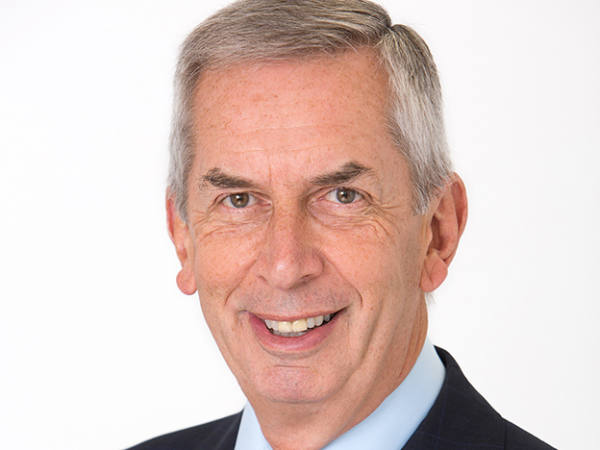It is important to diversify your portfolio so that if one area goes down, hopefully other parts won’t. Funds focused on alternative assets can also boost your returns. Private equity investments, for example, offer the prospect of high growth and diversification away from equities because they are unlisted. Private investors generally can’t access this asset class directly, but there are a number of investment trusts focused on this area. However, they are high-risk, so they should only account for a small portion of larger portfolios. Infrastructure, by contrast, is a lower-risk and high-yielding way to get exposure to alternative investments.
HgCapital Trust (HGT)
HgCapital Trust is a direct play on software and services businesses, and its share price and net asset value (NAV) total returns have continued to perform well. The trust's holdings include Visma, an Oslo-headquartered firm with a focus on accounting, resource planning and payroll software; and business management software specialist Access. The trust is fairly concentrated, with Visma and Access making up more than a fifth of its assets at the end of March and the top 20 holdings representing around 80 per cent. That said, its holdings are diversified in terms of the industries they work with, while the trust invests across different geographies.
As with other popular trusts, a sticking point is that its shares appear relatively expensive. At the end of August, they traded on a 21.8 per cent premium to NAV. Some would also caution that its investment managers focus on a highly valued sector that could be subject to a pullback. DB
HarbourVest Global Private Equity (HVPE)
While private equity trusts have shown great resilience, both during the pandemic and over the longer term, this is an asset class that can carry greater risk than listed equities. Investors who worry about the concentrated nature of some private equity funds may prefer a more diversified offering.
Harbourvest Global Private Equity ticks this box, with a focus on holding other private equity funds – something that significantly boosts its number of underlying holdings. The trust had 51 per cent of its assets in primary private equity funds at the end of July, with 28 per cent in secondary assets and 21 per cent in direct investments.
Like many other private equity trusts, it has held up well in part because of a focus on growth sectors such as technology. Harbourvest Global Private Equity's shares have performed extremely well over the past year, notably outpacing rivals such as Pantheon International (PIN). However, HarbourVest has a greater focus on areas such as venture capital so might carry greater risk.
It can be tricky to keep track of the underlying holdings of more diversified private equity trusts as much of their exposure is via other funds. But the risk of things going wrong should be lower than with trusts that invest directly in private equity – especially when it comes to stock-specific risk. DB
Oakley Capital Investments (OCI)
A common complaint among private equity trust managers has been that their shares still languish on substantial discounts to NAV, even after strong share price performance both during the pandemic and in the longer run.
This may be a hangover from the problems certain private equity trusts ran into during the financial crisis, or a lingering perception of private equity investors as predators. But it means that investors can access many of these trusts at fairly cheap entry points.
Several private equity trusts stand out in this respect, including Oakley Capital Investments. The trust offers a concentrated portfolio of companies with a big focus on technology-enabled businesses. This approach has paid off nicely during the pandemic: in a trading update for the first half of 2021, the trust's board noted that 14 of the companies it holds had grown their revenues at or above expectations. Four companies had experienced a modest impact on their financial performance due to the Covid-19 pandemic and three companies took a significant hit from Covid-related restrictions.
Oakley Capital Investments focuses on the technology, consumer and education sectors and, like many peers, has done well by backing businesses that have flourished during the pandemic. The trust also has a strong balance sheet and has managed to exit investments at a good uplift. Although its discount to NAV had tightened significantly as of the end of August, it was still around 15 per cent.
The high quality of the companies it invests in, a stubborn discount to NAV and a concentrated portfolio that is relatively straightforward to keep track of make this trust a compelling option. However, concentrated funds are more vulnerable to problems with individual holdings. This trust could also run into tougher times if investors become less keen on digitally enabled businesses. DB
HICL Infrastructure (HICL)
HICL Infrastructure aims to deliver sustainable income by investing in core infrastructure projects. Over 70 per cent of its assets were in public private partnership (PPP) projects at the end of its last financial year on 31 March and included assets such as roads, hospitals and railways. Health and transport-related projects each accounted for 29 per cent of its assets and it had 116 holdings.
Its managers look to invest in public sector, government-backed or regulated revenues; concessions that are predominantly availability-based because their payments don’t generally depend on the level of the project asset's use; and companies in the regulated utilities sector. They like to invest in projects with stable revenues and lower levels of debt. They favour projects in areas with high barriers to entry so that there is limited competition and which involve assets essential to the operation of public services and that operate with a strong social licence. They take environmental, social and goveranance (ESG) factors into consideration when investing.
Nearly three-quarters of the trust's assets were in the UK and 18 per cent in EU countries at the end of March. Most of the projects are fully operational so are not exposed to construction risk. And the trust had a correlation with inflation of 0.8x at the end of its last financial year.
HICL Infrastructure aims to pay a dividend of at least 7p per share a year and preserve the capital value of its investment portfolio over the long term, with potential for growth. The trust’s board said in July that cash generation from the trust’s investments remains in line with its forecasts. So it is still aiming to pay a dividend of 8.25p per share for the trust's financial year to 31 March 2022, which should be fully cash covered, as well as in the financial year after that.
The trust had steadily increased its annual dividend payouts in most years since 2007, the year after its launch. But its investment manager thinks that it is appropriate to more closely link future dividend increases with the recovery of dividend cash cover. This is for reasons including the macroeconomic environment and the proposed increase in UK corporation tax from 1 April 2023.
But the trust’s managers are also trying to improve the trust’s long-term earnings profile to support dividend growth over the longer term. And even at this level the trust still had an attractive yield of 4.8 per cent at the end of August.
The trust’s investments are managed by InfraRed Capital Partners, which has invested in and managed core infrastructure assets for more than 20 years. LW
Renewables Infrastructure Group (TRIG)
Unlike a number of other renewable energy infrastructure funds, Renewables Infrastructure Group doesn’t just invest in one sub-sector of this area. This means that it does not rely on the fortunes of one particular type of energy so is more diverse and spreads risk.
At the end of June, it had 79 investments – 50 wind projects, 28 solar photovoltaic projects and one battery storage project. Onshore wind accounted for 59 per cent of its assets, offshore wind 32 per cent and solar 8 per cent. Some 61 per cent of its assets were in the UK, where it cannot have less than 35 per cent of its portfolio value, alongside investments in Sweden, Germany, France and Ireland.
The assets receive revenues from government support and electricity sales. This year, the trust's managers expect three-quarters of its revenues to come from government subsidies, mostly index-linked, providing good revenue stability.
The trust’s long-term project revenues have inflation linkage via regulated incentives and exposure to energy prices. And most of its investments are operational, as projects under construction cannot account for more than 15 per cent of its portfolio value.
The trust aims to generate sustainable, income-based returns from infrastructure that contributes towards a zero-carbon future. It made an annualised total return of 8.1 per cent between its launch in 2013 and the end of 2020. The trust’s NAV annual returns have proved to be defensive, with positive numbers in every full calendar year since its launch in 2013, including in 2018 when the FTSE World and FTSE All-Share indices made negative returns.
The trust’s board aims to pay a dividend of 6.76p a share in respect of this year, the same level as it paid last year. At the end of August it had a yield of 5.4 per cent.
The trust’s board and managers take ESG factors into consideration. The trust’s ESG objectives are to: mitigate climate change, preserve the natural environment, positively impact the communities in which the trust works and maintain ethics and integrity in governance.
A downside to the trust is that it sometimes trades at a very high premium to NAV, although at the end of August it was on 11.8 per cent – one of its lower levels. If you want to invest new money in Renewables Infrastructure Group you could look out for when it is on a lower rating – as long as this is not because there is something wrong with the trust. Or invest when it does a share issue as these are typically issued at lower premiums. LW
| Cumulative total returns | ||||
|---|---|---|---|---|
| Fund/benchmark | 1yr (%) | 3yr (%) | 5yr (%) | 10yr (%) |
| HarbourVest Global Private Equity share price | 37.56 | 70.16 | 154.59 | 434.34 |
| HgCapital Trust share price | 50.14 | 122.41 | 255.71 | 379.92 |
| Oakley Capital Investments share price | 50.02 | 91.12 | 187.23 | 175.22 |
| IT Private Equity sector average | 55.48 | 32.13 | 78.07 | 179.80 |
| HICL Infrastructure share price | 8.10 | 27.45 | 25.38 | 157.05 |
| IT Infrastructure sector average | 10.34 | 28.32 | 40.25 | 137.73 |
| Renewables Infrastructure Group share price | -2.66 | 34.44 | 59.72 | |
| IT Renewable Energy Infrastructure sector average | 2.70 | 24.34 | 49.09 | 94.92 |
| MSCI World index | 26.25 | 43.50 | 90.01 | 272.11 |
| FTSE All Share index | 26.95 | 11.37 | 33.29 | 110.23 |
| Source: FE Analytics as at 31 August 2021 | ||||











